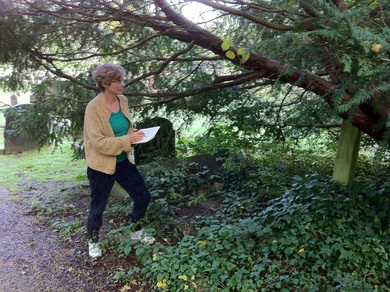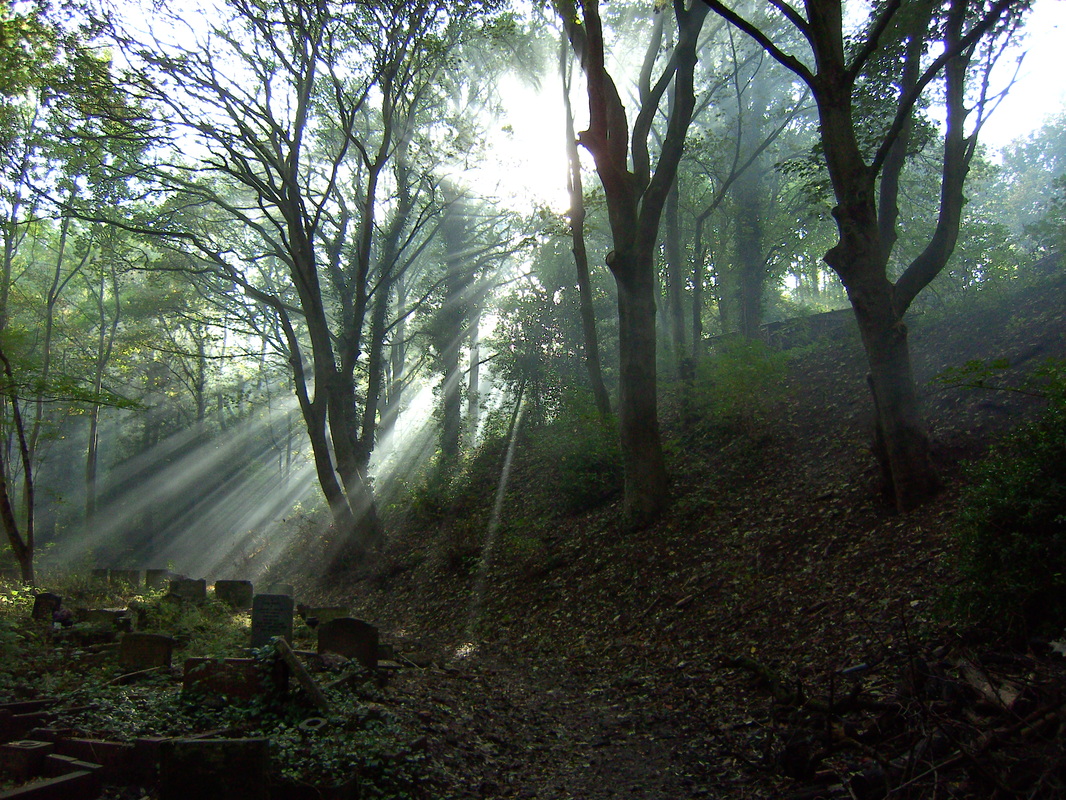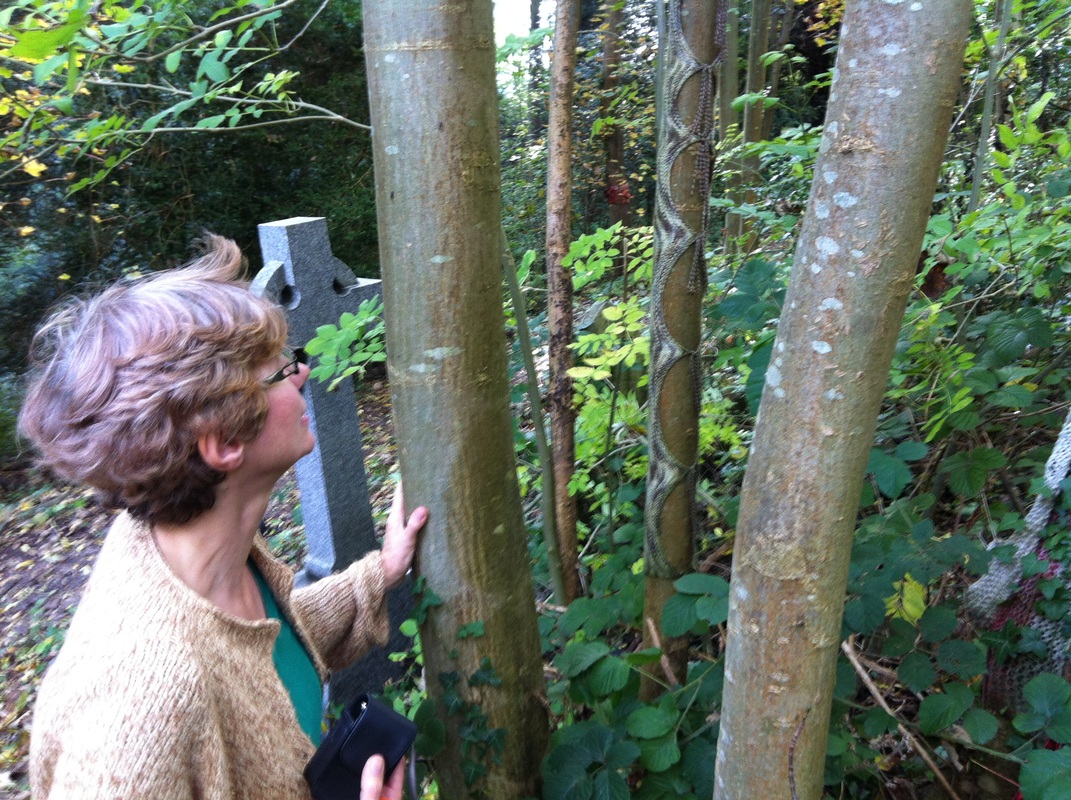FP: I am very conscious of the difference between urban space and somewhere like Exmoor, especially the context and extent of it. As an artist you could take a close up of a leaf or a tree and it could be anywhere, but it isn’t. As a writer in London I am conscious all the time of the thinness of it…
OJ: Thinness?
FP: The thinness of the experience in terms of the tree and where it is situated – the fragility of nature before you get back into the urban. It is a completely different experience to having that almost infinite reach you get in wild landscapes. I think trees behave in different ways in the city – as well as people.
OJ: How definable is that?
FP: I think it happens in the work. Using language you draw in more aspects of the landscape and the people who live there, the whole area.
OJ: Some aspects of that must be unconscious.
FP: Yes, there is a richness and density of experience on the moor which makes itself felt in the writing.
OJ: Which is the opposite to thinness I suppose.
FP: But the thinness is also interesting, almost more interesting at times. There are violent juxtapositions, such as the trees and the graffiti on the Parkland Walk in London – a disused railway line. Trees are stressed in the city, even sometimes graffitied, as if they were another brick wall.
 Image courtesy of Owain Jones (c)
Image courtesy of Owain Jones (c) FP: Right now it is!
OJ: Is it a process you don’t articulate?
FP: Well – it is in the writing – in the text. Saying that is a way for me to avoid discussing it in another kind of discourse, such as this one. That’s part laziness and partly a sense that an explanation could be become turgid and superfluous. The poem itself is a manifesto.
OJ: Is the text reworked or does it stay as it emerged?
FP: Both, but usually it is reworked. Sometimes it just does not work at all – the text has another kind of thinness – it is too slight. The notes towards a poem have to have a movement and substance of their own. Something has to be emerging, rather like the tree. Perhaps even travelling, like a migrating birch.
There is one poem I’ve had a lot of difficulty with, but I’ve still kept it, can’t quite get rid of it, even though it hasn’t quite worked. It has to do with an isolated oak tree known as Hoar Oak on Exmoor, up on the top, near the Chains, beyond Simonsbath, right up on the top. And it is this fragile thing. It barely survives. But it is ‘significant’ and it has a fence around it. It’s a struggle to get there. You have to wade across a river and miles of bog. This poor thing is barely on the verge of existence. It reminded me of the crazy people I heard about, the Breatharians, who try to live on air (obviously a sect that has not survived long). It is like that, this tree just trying to live on the atmosphere. It has virtually nothing else in terms of nutrients. And the poem is a very slim, slight poem that has got thinner and slighter, but I am reluctant to let go because it represents something. It represents the least you can have to grow as an oak. It is as fragile as it could be. Like the urban trees it is growing under stress and in the wrong place.
OJ: Have you a sense of how old it is?
FP: It’s not that old, because the original Hoar Oak was destroyed. It was replaced in the 1900s because it is a significant site, an ancient oak that has to be replaced, but the conditions are no longer tenable. It’s still there, but only just.
OJ: Like the poem
FP: Yes!
Later FP read a passage from Roger Miles The Trees and Woods of Exmoor (Exmoor Press, 1972) to OJ on the Hoar Oak:
‘Of all the boundary marks of the old deer forest of Exmoor, the most famous is a tree… The original tree – or the first of which we have record – fell ‘with very age and rotteness’ in 1658. A second was planted in 1662. That fell down on Boxing Day, 1916. Then several saplings were planted on the eastern side of the combe. One remains, struggling bravely within iron railings against a hostile climate. Although over 50 years old, the trunk diameter is scarcely more than a hand’s span.’
- Myne: new and selected poems and prose, 1976 - 2005 Exeter: Shearsman, 2006
- www.shearsman.com
- Lines of sight Exeter: Shearsman, 2009
- Stone settings, with Tilla Brading, Minehead: Odyssey Books, 2010
- An Alphabet for Alina, with Peterjon Skelt, Hereford: Five Seasons, 2012 www.fiveseasonspress.com
- The Ground Aslant: an anthology of radical landscape poetry, edited by Harriet Tarlo, Exeter: Shearsman, 2011
- “Common pink metaphor: from ‘The Landscape Room’ to Somerset Letters”, in How2, 2008
- Collaborative sequence with American poet Julia Cohen: www.likestarlings.com.
- British Electronic Poetry: http://www.soton.ac.uk/~bepc/;
- Archive of the Now: www.archiveofthenow.org.uk;
- Poetry International: http://www.poetryinternationalweb.net.


 RSS Feed
RSS Feed
